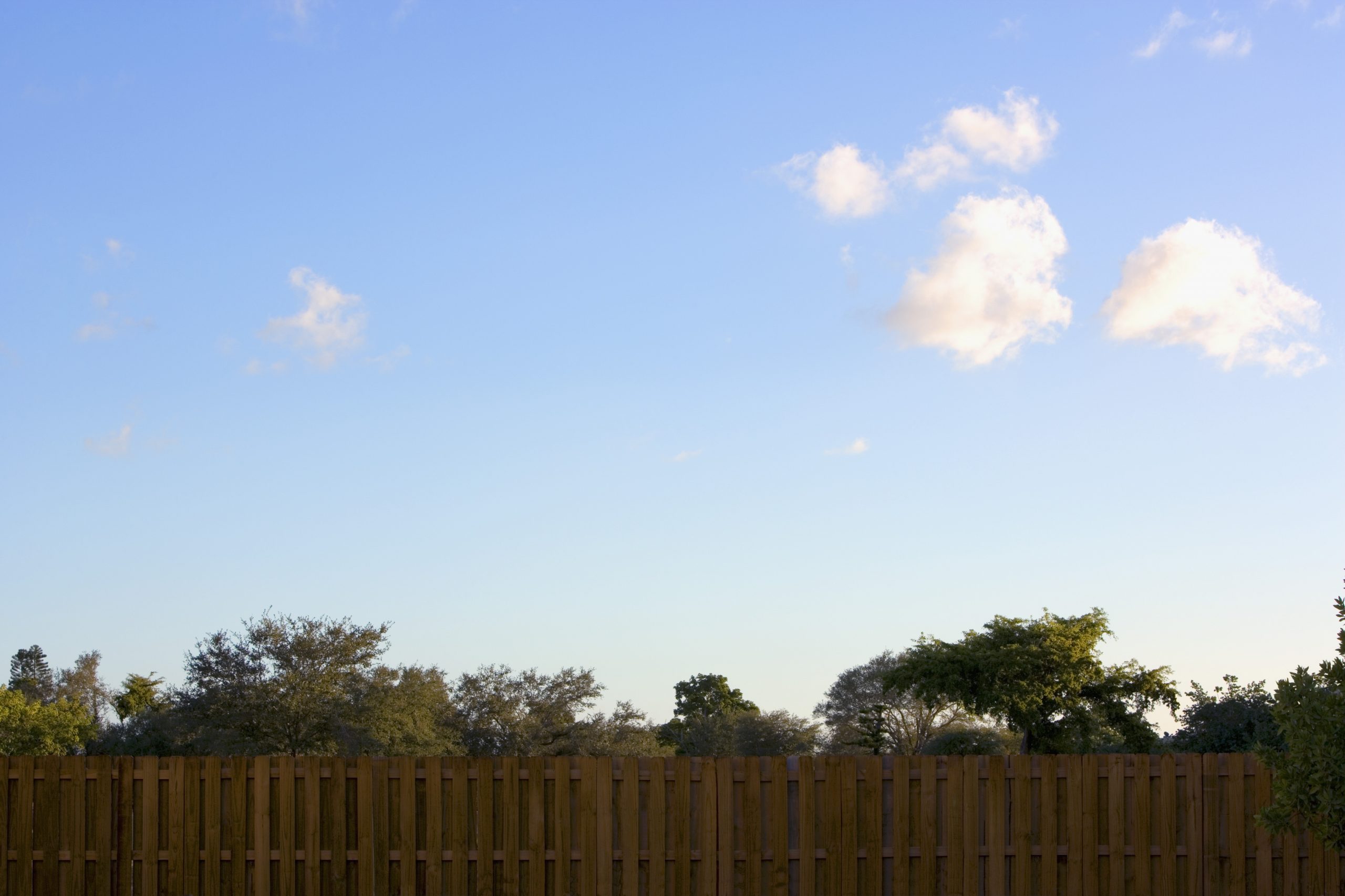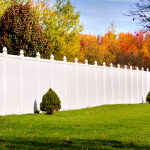Etiquette is the art of living among other people without offending them. While good manners are important, etiquette extends far beyond conversations at the dinner table. When you’re making a major modification to the appearance of your home, for example, it pays to consider the impact it will have on the people living around you. After all, a fence doesn’t just change the appearance of your own home – it changes the appearance of your neighbors’ homes, too. Here are some simple guidelines for improving your home with a new fence without driving your neighbors crazy.

1. Make Sure Your Fence is Really on Your Property
This may sound like a no-brainer, but the first consideration of proper fence etiquette is to make absolutely sure that you’re building your new fence within your property lines. Even if you’re confident about where your property ends, you owe it to yourself and your neighbors to verify it. You can refer to the plat map (sometimes just called a “plat”), which is a document that was drawn by a civil engineer when your neighborhood was first divided into separate plots. If you don’t have this map, you may be able to get a copy from your county’s records office. If not, you’d better hire a surveyor to mark out the boundaries of your property for you. This might mean an extra $500 – $1000 expense, but it could save you from more expensive consequences later on – such as having your new fence demolished because it was in the wrong place.
2. Know the Rules
If you belong to a homeowner’s association (HOA), then it’s a sure bet that they have some rules about fences. The height, materials, and even the color of fences in your neighborhood might have been decided before you ever moved in. However, even if you’re not in a HOA, there are likely still some rules to follow. Local zoning ordinances could have an impact on your new fence. This is especially true if your home is on a corner lot, because a tall fence in the front yard can impact visibility for drivers approaching the intersection. Although your fence contractor may already know the laws in your area, it’s not their responsibility to make sure that your new fence meets every local code or HOA rule. Do your homework and talk to your contractor before they get started to make sure you don’t have to backtrack later.
3. Talk with Your Neighbors First
While there’s no law that says you have to inform your neighbors of your plans to build a fence, the fact is that it’s going to change the view from their windows as well as yours. Therefore, it’s proper fence etiquette to let them in on your plans before you get started. You don’t have to show them the exact type or color of fence you’ve picked out, because it’s not their decision. However, talking to them beforehand is a great way to head off potential disputes later on. In fact, you might be pleasantly surprised to discover that they were also thinking about installing a new fence between their property and yours, and you might even be able to come to an agreement about sharing the costs of the project. In any case, taking the time to discuss your plans with them will communicate to your neighbors that you care about them and what they think.
4. Make Sure Your Neighbors Get the Pretty Side
Another important consideration of proper fence etiquette is how the fence is going to look from your neighbor’s yard. Some fences look the same on both sides, and it won’t be an issue. However, most privacy fences have a “good” side. This is because the fence is reinforced on one side with vertical posts and horizontal backer rails, while the other side presents a smoother, more professional appearance. While it might be tempting to install the fence with the more attractive side facing your yard, that would be seen as a rude gesture toward your neighbors. In fact, in some areas, it might even be against local regulations. For these reasons, it’s a good idea to “put your best foot forward” and install your new fence with the good side facing out. It’s also worth noting that some fences are designed to solve this problem by presenting the same appearance on both sides. Because of this, these are sometimes called “neighbor-friendly” fences. They might have a “sandwich” design which covers the posts with attractive panels on both sides, or they might use a basket-weave or a shadow-box design. If you want your fence to look equally attractive from both sides, ask your fencing contractor about neighbor-friendly options.
5. Maintain Your Fence
While it’s tempting to think that your responsibility to your neighbors ends once a fence is installed, the truth is that it’s just beginning. Like any other part of your home, a fence requires regular upkeep in order to remain safe and attractive. Different materials can have an impact on maintenance requirements. A wooden fence, for example, is not going to stay beautiful for long unless you take care of it. The Family Handyman has an in-depth guide to caring for a wood fence as the years go by. For example, they recommend staining the fence at least once every three years. By contrast, a fence constructed of vinyl or aluminum will require a lot less care. Additionally, a darker-colored fence is less likely to appear dirty and should require less frequent cleaning. Whatever type you install, don’t forget that you’re responsible for cleaning and maintaining both sides of the fence. Just because one side faces your neighbors doesn’t mean it’s their responsibility to clean and repair that side. They didn’t ask for any extra work!
Good Neighbors Build Good Fences!
As you can see, there’s a lot to think about when you’re planning to build a new fence. However, proper fence etiquette really doesn’t have to be difficult. Just keep in mind that you’re not just modifying the appearance and the property value of your own home, but of your neighbors’ homes, too. A little thoughtfulness and some communication up front will go a long way toward keeping the peace in your neighborhood. If any problems or disputes do arise later on, you’ll want your neighbors to remember that you did everything in your power to avoid trouble. If you follow these simple guidelines, you might discover that fences can bring people together even while separating their properties!
If you’d like more information on how to build a fence that your neighbors love as much as you do, contact Clarksville Fencing today.







